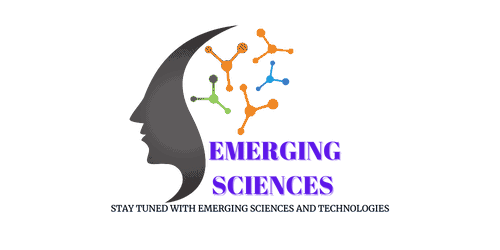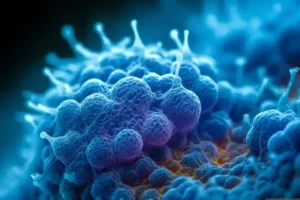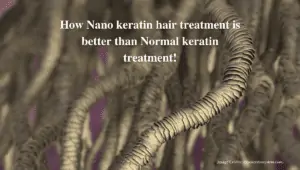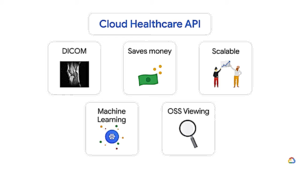Recently Animal and Plant Health Inspection Service (APHIS) of the US Department of Agriculture (USDA) approved genetically modified “purple tomatoes”, clearing the path for selling this unique fruit in American stores next year.
Table of Contents
Toggle
The taste, smells, and looks of this purple tomato are like normal garden tomatoes we are using in the daily kitchen.
According to the statement of the agency in a September 7 news release, “From a plant pest risk perspective, this plant may be safely grown and used in breeding”.
In addition to the unique color, purple tomatoes possess a longer shelf-life and health benefits than garden variety red tomatoes.
Therefore, the approval of this super fruit moves one step closer to its widespread distribution and is expected to hit the USA grocery market next year.
Here is a detailed look at the cause of purple tomatoes being more nutritious than normal garden tomatoes and the science behind them.
What makes purple tomatoes so ‘healthy’?
The tomato is actually a genetically modified tomato, developed in the lab 14 years ago by an international team of researchers from Italy, the UK, Germany, and the Netherland, including group leader British biochemist Professor Cathie Martin, at the University of East Anglia.
The first results of their research work on purple tomatoes and their benefits on mice models were published in 2008 in the journal Nature Biotechnology.
The supplementation of purple tomatoes to the cancer-prone mice increased their life span by around 30% longer than those who were supplemented with normal tomatoes.
In addition to the improvement of visual appeal, the purple tomato was created for the enhancement of nutritional qualities.
Through the process of genetic engineering, the team introduced two transcription factor genes responsible for the expression of anthocyanin in snapdragon (Antirrhinum majus) into the tomato to make purple tomatoes rich in anthocyanins.
Before going to explain more about this let me explain about transcription factors and their role in any living organisms such as microorganisms and well-developed human beings.
[You May Also Read: Newly discovered COVID-19 antibody can neutralize it’s all its variants]
Transcription factors and their role in any living organisms
- In simple language, the transcription factors are proteins that control specific genes by turning specific genes “ON” or “OFF” by binding to nearby DNA for the passing of genetic information from DNA to messenger RNA, and the process is called transcription.
- The transcription factors are broadly categorized into two types, activators, and repressors.
- The activator transcription factors boost a gene’s transcription and expression. That means in simple language, the activators turn “ON” specific genes to be expressed and the appearance of characters.
- Whereas the repressor transcription factors turn “OFF” the specific genes for their expression.
- The transcription factors allow cells to perform logic operations and combine different sources of information to “decide” whether to express a gene.
Transcription factors responsible for purple tomatoes
The group leader Professor Cathie Martin and her team introduced two transcription factors from the snapdragon plant in tomatoes to express and accumulate an adequate amount of anthocyanin in tomatoes.
The introduction and the expression of the two transgenes the Delila (Del) and Rosea1 (Ros1) genes from the snapdragon Antirrhinum majus in the fruit of transgenic tomatoes, enhanced the threefold hydrophilic antioxidant capacity of tomato fruit and resulted in fruit with intense purple coloration in both peel and flesh.
The Del gene encodes a basic helix-loop-helix transcription factor and the Ros1 gene encodes an MYB-related transcription factor whose interaction induces the biosynthesis of anthocyanin in snapdragon flowers.
Generally, transcription factors that regulate the expression of the genes involved in entire metabolic pathways provide effective tools for engineering high levels of metabolites.
Consequently, overexpression of the ANT1 gene encoding a transcription factor that regulates anthocyanin production in tomatoes resulted in limited purple coloring on the skin and the cell layers immediately beneath the skin.
The highest concentrations of anthocyanin accumulation were found in the transgenic tomato is averaged 2.83 ± 0.46 mg of anthocyanin per g fresh weight.
[You May Also Read: Details of Post-COVID Complications]
Why were genes of snapdragons chosen for the creation of purple tomatoes?
Antirrhinum majus plants commonly known by the names snapdragon, dog flower, and dragon flower contain adequate amounts of anthocyanins.
The anthocyanins are naturally occurring polyphenol pigments found in particularly high levels in berries such as blackberry, cranberry, and chokeberry. However, they don’t have a flavor or smell of their own, although their presence brings a slightly “astringent”, or acidic, taste.
Anthocyanin offers protection against cardiovascular diseases, certain types of cancers, and age-related degenerative diseases due to its antioxidant properties.
Further, the reports from various studies indicate that anthocyanins promote visual acuity, have anti-inflammatory activity, and hinder obesity and diabetes.
Why tomato is chosen for?
In a statement back in 2008, Martin said “Most people do not eat five portions of fruits and vegetables a day, but they can get more benefit from those they do eat if common fruit and veg can be developed that are higher in bioactive compounds,”.
According to the report published in the journal Nature Biotechnology, the tomato is an excellent candidate for transgenic enhancement of flavonoid content.
It is an important food crop found worldwide and its levels of flavonoids (which include anthocyanins) are considered suboptimal, with only small amounts of naringenin chalcone and rutin accumulating in tomato peel.
Flavonoids represent an important source of hydrophilic dietary antioxidants, whereas the most abundant antioxidant in tomato fruit is lycopene, a lipophilic antioxidant.
Generally, foods rich in both soluble and membrane-associated antioxidants are considered to offer the best protection against disease.
Martin, along with Jonathan Jones from the Sainsbury Laboratory, went on to establish a spin-off company called Norfolk Plant Sciences in 2009 — UK’s first GM crop company.
They submitted a request for regulatory approval in August last year.
“The bittersweet thing is that the tomatoes will be on sale in America and not the UK as well. But the plus side is that by focusing on home growers we will be consumer-oriented, and we will be able to get feedback and interest needed to develop other products,” Martin said in the 2022 statement cited earlier.
You May Also Read: Wildcat Ridge rock samples of Mars hints presence of ancient life on Mars
Reference:
Butelli, E., Titta, L., Giorgio, M. et al. Enrichment of tomato fruit with health-promoting anthocyanins by expression of select transcription factors. Nat Biotechnol 26, 1301–1308 (2008). https://doi.org/10.1038/nbt.1506















